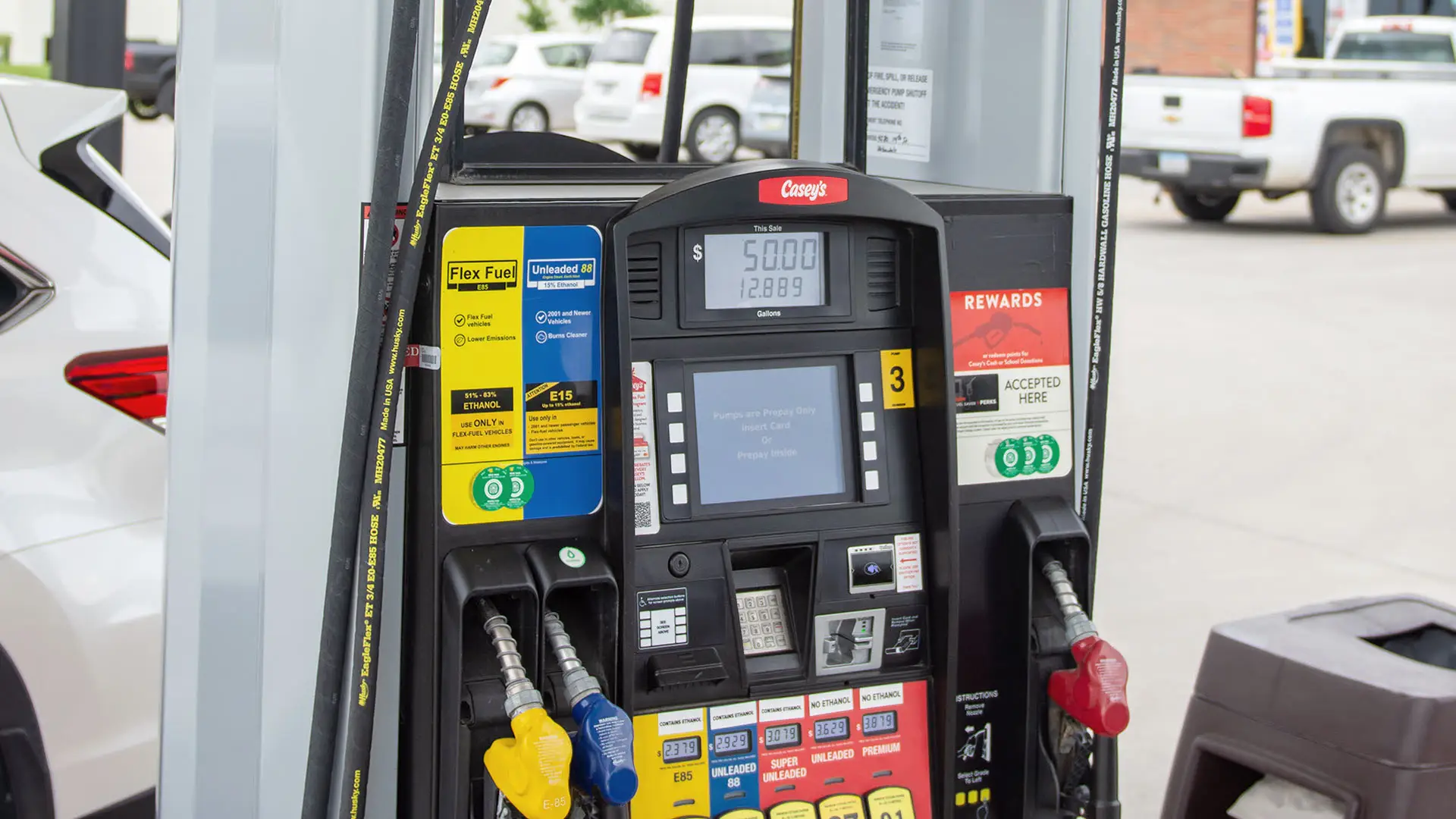Irrigation is crucial for Nebraska’s agricultural economy, providing corn and other crops water in a sustainable manner that protects the state’s water supplies.
Modern irrigation systems in Nebraska allow farmers to precisely water their crops based on real-time soil moisture data and crop needs. This information helps corn farmers optimize crop quality and yield while minimizing water waste or runoff.
By reducing overwatering and runoff, an advanced water irrigation system helps farmers conserve groundwater resources from sources like the Ogallala Aquifer while boosting crop productivity.
Primary Types of Irrigation Systems Used in Nebraska
There are many forms of irrigation. The three most commonly used by corn farmers in Nebraska are center pivot irrigation, subsurface drip irrigation and furrow irrigation.
Center Pivot Irrigation
By far the most common irrigation system in Nebraska and the method most often used in corn farming is center pivot irrigation which waters fields using elevated pipes. Stretching far across the field, the pipes spray water onto the plants through sprinklers hanging from the pipe. One end of the pipe is attached to a center pivot and the support structure of the pipe has wheels, which enables the pipe to move in an arc around the pivot to water different parts of the field.
The benefits of center pivot irrigation systems are that they work well on a large variety of land types and distribute water evenly to the plants. Center pivot irrigation is not a good choice for irregularly shaped fields, which can limit the movement of the pipe and interfere with its ability to water all the plants.
Subsurface Drip Irrigation
Subsurface drip irrigation waters corn through a plastic tube buried 12-18 inches under the rows of plants. Water flows into the tube, which is commonly referred to as “tape,” and is delivered to the crops through small holes spaced evenly along the length of the tube. This allows water to leak from the tube into the ground, where it is absorbed by the roots of the nearby plants. This is similar to the drip tape irrigation systems many homeowners use to water shrubs and flowers in their yard.
Highly efficient, a subsurface drip irrigation system delivers water directly to the roots of the plants. And, because the system applies water underground, none of the liquid is lost to evaporation. The downside of subsurface drip irrigation is the cost—it is more expensive to install than the more popular center pivot irrigation systems.
Furrow Irrigation
Furrow irrigation supplies water to crops through evenly spaced rows of furrows, or small trenches, dug along the length of the farm field in between rows of plants. Water flows into the furrows and is absorbed by crops planted on either side. Farmers control the amount of water that flows into the furrows through a series of gated pipes, which carry water to the field from a well.
Though less common in Nebraska than center pivot or subsurface drip irrigation, furrow irrigation is more likely to be used in valleys with flat land. It’s more affordable, but the water may be less evenly distributed than it is by Nebraska’s more common irrigation systems. It is often used in Western Nebraska where the soil is more sandy and cannot hold water for long periods of time.
What Type of Irrigation System Is the Best?
One of the best ways to determine what type of irrigation system is right for a particular field is to consider the field topography and shape. Irregularly shaped fields don’t work well for center pivot irrigation, for example, while furrow irrigation works best on flatter fields rather than those with lot of hills.
Price and water availability also are major considerations when choosing an irrigation system. For example, subsurface drip irrigation can be more expensive to install, but can be a good choice in areas with limited water resources. That’s because so little water is lost to runoff or evaporation, an efficiency that can make a difference if little water is available or if the wells are so deep that pumping costs are prohibitive.
Irrigation Innovations Creating Sustainability
Modern irrigation equipment is extremely advanced and efficient, which helps farmers implement more sustainable farming practices. Center pivot irrigation systems, for example, can now operate with less water pressure. In addition, improvements to irrigation sprinklers on center pivot systems means water can be sprayed closer to the crops, providing more even distribution and reducing the amount of water lost to evaporation or drifting.
Farmers also improve efficiency by using center pivots in conjunction with variable rate irrigation, which gives them individual control over each sprinkler on the pipe. This allows them to adjust the flow out of each sprinkler head, so they can be more responsive to the needs of the plants and prevent overwatering.
Conserving Water with Advanced Data and Technology
Additional smart farming technology such as soil moisture sensors, drones and sophisticated computer models also helps determine the exact amount of water required by the crop at each growth stage, enabling farmers to irrigate only when needed rather than on a fixed schedule. They also operate many irrigation systems via smartphones, computers or tablets. Through this high-tech irrigation control, farmers can monitor and adjust water use, identify problems and turn systems on or off with the touch of the screen.
Feeding Crops Through Irrigation
These days, irrigation systems aren’t just about water. They also are a way for farmers to apply nutrients or control pests more efficiently than ever. Using sophisticated equipment and data programs, farmers can apply precise amounts of nitrogen fertilizers, pesticides, fungicides or soil improvement products while they water their crops. They do this by putting the products in irrigation water, after it is pumped from a well, and then applying the water to the crop. This allows farmers to use smaller amounts of fertilizers or pesticides and also accurately target and treat sections of the field that need a boost to soil health.
The Future of Irrigation: Continued Technological Development
As more farmers see the difference these advanced irrigation technologies make on their operations, the industry will experience even more gains in sustainability, water conservation and crop health. By precisely targeting the hydration needs of their crops, farmers can increase corn yields and quality while using less water.
While the general public might not be aware of the technologies used in today’s water and irrigation systems, it’s a more efficient means of crop production compared to fields without irrigation, or “dryland”. Dryland corn production relies solely on mother nature to provide enough water for a healthy crop. In periods of drought, dryland production can be limited, therefore growing less product for the effort and inputs provided to the crop. However, with irrigation, if rainfall is scarce, water is applied in short bursts when needed to maintain optimal growth, resulting in a much higher production efficiency. And, while it might seem as though irrigation water that evaporates is gone forever, it in fact goes back into the water cycle as humidity—just like rainwater.
Related Posts
A Guide to Agricultural Internships: Hands-On Knowledge for Your Career
The Nebraska Corn Board, now in its 34th year of sponsoring agricultural internships, is committed to educating the next generation of agricultural leaders. These paid internships, offered in partnership with key industry leader organizations, [...]




